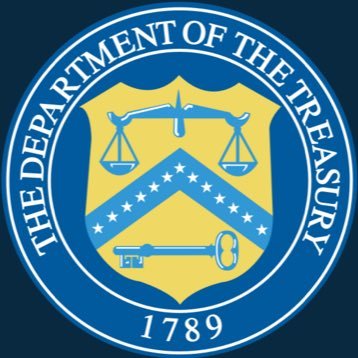The Swiss rivals will become one entity in a bid to help stabilize global markets.
 In a stunning move, UBS announced on Sunday, March 19, that it will acquire for more than $3 billion the ailing Credit Suisse Group, making it part of UBS.
In a stunning move, UBS announced on Sunday, March 19, that it will acquire for more than $3 billion the ailing Credit Suisse Group, making it part of UBS.
Bank and Swiss authorities further outlined a rescue plan that will combine the former rivals into “a business with more than USD 5 trillion in total invested assets and sustainable value opportunities.”
Bank and government officials stressed that they wanted to solidify the rescue in time for the opening of European and North American markets on March 20. They also underscored that the plan represented a commercial rescue but not an official bailout of Credit Suisse.
Shortly after the UBS announcement, the Federal Reserve, the Bank of Canada, the Bank of England, the Bank of Japan, the European Central Bank, and the Swiss National Bank unveiled “a coordinated action to enhance the provision of liquidity via the standing U.S. dollar liquidity swap line arrangements.”
“To improve the swap lines’ effectiveness in providing U.S. dollar funding, the central banks currently offering U.S. dollar operations have agreed to increase the frequency of 7-day maturity operations from weekly to daily. These daily operations will commence on Monday, March 20, 2023, and will continue at least through the end of April,” according to the joint statement.
“The network of swap lines among these central banks is a set of available standing facilities and serve as an important liquidity backstop to ease strains in global funding markets, thereby helping to mitigate the effects of such strains on the supply of credit to households and businesses,” according to the statement.
The acquisition while “attractive for UBS shareholders … as far as Credit Suisse is concerned, this is an emergency rescue,” says Colm Kelleher, chairman of UBS in a prepared statement.
“We have structured a transaction which will preserve the value left in the business while limiting our downside exposure. Acquiring Credit Suisse’s capabilities in wealth, asset management and Swiss universal banking will augment UBS’s strategy of growing its capital-light businesses. The transaction will bring benefits to clients and create long-term sustainable value for our investors,” Kelleher says.
Kelleher will be chairman and Hamers will be croup CEO of the combined entity to come from the acquisition.
“The combination supports our growth ambitions in the Americas and Asia while adding scale to our business in Europe, and we look forward to welcoming our new clients and colleagues across the world in the coming weeks,” says Ralph Hamers, CEO of UBS, in a statement.
However, observers have noted that UBS and Credit Suisse have access to central bank funding and UBS has accepted $100 billion in liquidity. Swiss authorities are also proposing a complex backstop of $9 billion to cover any future losses that UBS cannot handle.
“Both banks have unrestricted access to the Swiss National Bank existing facilities, through which they can obtain liquidity from the SNB in accordance with the guidelines on monetary policy instruments,” according to the official statement.
The acquisition of the ailing Credit Suisse Group “will further strengthen UBS’s position as the leading Swiss-based global wealth manager with more than USD 3.4 trillion in invested assets on a combined basis, operating in the most attractive growth markets,” say officials in the initial announcement.
The move follows quickly after Credit Suisse got the greenlight last week to borrow $54 billion from the Swiss National Bank (SNB), the central bank for Switzerland, in an effort to stabilize the situation. Credit Suisse began spinning out of control at about the same time as Silicon Valley Bank (SVB) in the U.S. collapsed.
The discussions over the weekend “were initiated jointly by the Swiss Federal Department of Finance, FINMA and the Swiss National Bank and the acquisition has their full support,” according to the official UBS statement.
 “Under the terms of the all-share transaction, Credit Suisse shareholders will receive 1 UBS share for every 22.48 Credit Suisse shares held, equivalent to CHF 0.76/share for a total consideration of CHF 3 billion. UBS benefits from CHF 25 billion of downside protection from the transaction to support marks, purchase price adjustments and restructuring costs, and additional 50 percent downside protection on non-core assets,” according to the official statement. “The combination of the two businesses is expected to generate annual run-rate of cost reductions of more than USD 8 billion by 2027.”
“Under the terms of the all-share transaction, Credit Suisse shareholders will receive 1 UBS share for every 22.48 Credit Suisse shares held, equivalent to CHF 0.76/share for a total consideration of CHF 3 billion. UBS benefits from CHF 25 billion of downside protection from the transaction to support marks, purchase price adjustments and restructuring costs, and additional 50 percent downside protection on non-core assets,” according to the official statement. “The combination of the two businesses is expected to generate annual run-rate of cost reductions of more than USD 8 billion by 2027.”
This is a developing story but here are some highlights from the initial and related announcement:
- UBS reports that it “remains strongly capitalized well above our target of 13 percent and committed to progressive cash dividend policy;”
- Swiss authorities concluded over the weekend that the SNB’s initial infusion of $54 billion would not be enough to rescue Credit Suisse;
- Credit Suisse had plans to lay off 9,000 employees and it’s unclear what will become of that plan;
- UBS Investment Bank will bolster its “competitive position with institutional, corporate and wealth management clients through the acceleration of strategic goals in Global Banking while managing down the rest of Credit Suisse’s Investment Bank. The combined investment banking businesses accounts for approximately 25 percent of group risk weighted assets;”
- UBS officials say, “the transaction is EPS accretive by 2027 and the bank remains capitalized well above its target of 13 percent;” and
- Officials add that the transaction is “not subject to shareholder approval. UBS has obtained pre-agreement from FINMA, Swiss National Bank, Swiss Federal Department of Finance and other core regulators on the timely approval of the transaction.”
 In response to the rescue plan, the U.S. Department of the Treasury and Federal Reserve issued a joint statement from Secretary of the Treasury Janet L. Yellen and Federal Reserve Board Chair Jerome H. Powell: “We welcome the announcements by the Swiss authorities today to support financial stability. The capital and liquidity positions of the U.S. banking system are strong, and the U.S. financial system is resilient. We have been in close contact with our international counterparts to support their implementation.”
In response to the rescue plan, the U.S. Department of the Treasury and Federal Reserve issued a joint statement from Secretary of the Treasury Janet L. Yellen and Federal Reserve Board Chair Jerome H. Powell: “We welcome the announcements by the Swiss authorities today to support financial stability. The capital and liquidity positions of the U.S. banking system are strong, and the U.S. financial system is resilient. We have been in close contact with our international counterparts to support their implementation.”
